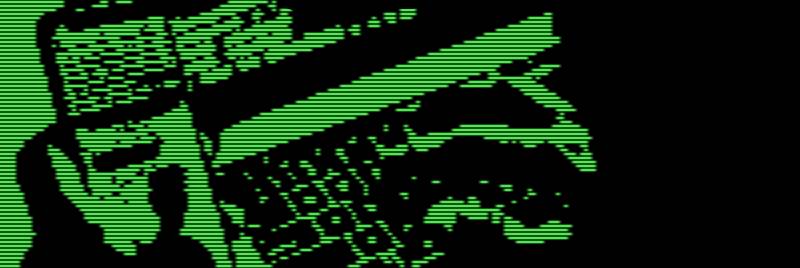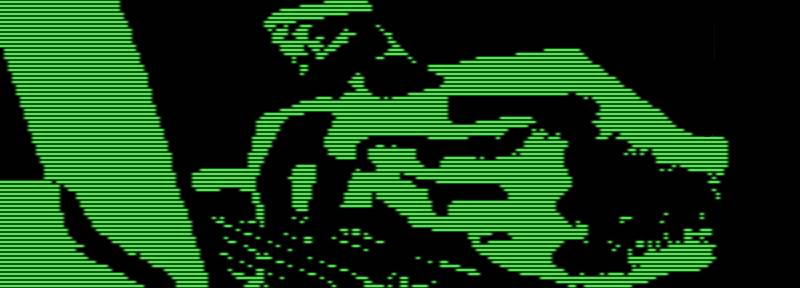

This domain 'noroute.net' is not on the Internet. Or rather this front info page at 'no-route.net' (note the addition of a hyphen) which you are presently reading, is obviously on the Internet so that you can view it in the most convenient possible way, but it is only here to inform you that loading a site over the Internet is not the primary purpose of the related 'noroute.net' domain.
You may find this odd. Indeed, the purpose of an ordinary domain name (of the 'DNS' kind) is typically to be resolved into an Internet Protocol (IP) address to which people can then connect over the Internet. So what is even the point of having a domain name, if that's not what it's doing in the case of 'noroute.net'?
The point is to have a canonical way to refer to different classes of sequestered, local, and otherwise non-routable IP addresses using the DNS system (and I am certain that 'noroute.net' is not the only such domain in use in this way, but it likely covers more situations than most), so that people can use their ordinary Internet-connected web browsers and other TCP/IP tools to also connect conveniently to a 'no-route net' that may be accessible via private link (meaning direct physical access, either wirelessly or by wire).
A no-route net is a private network that cannot be accessed from the public Internet. It may be able to 'dial out' to the Internet (or more likely, its users might also be simultaneously connected to the Internet), but no computer on the actual Internet can 'dial in' to a no-route net.
This distinguishes a no-route net from an ordinary private network with ordinary 'non-routable' IP addresses which can host servers that are accessible from the Internet using gateway technologies like NAT and port forwarding. So if a no-route net has a gateway to the Internet, it should only be openable from the inside, to let outside information in. Otherwise, it's not a no-route net.
But anyway, trusting the proprietor of a no-route net, who is likely just some rando, to also provide you with overall Internet service, is a literal bridge too far. The safest practice from a security standpoint is for a no-route net to offer no gateway to the Internet at all, in any direction, and let its users arrange their own simultaneous Internet access if needed.
The Internet Protocol defines three ranges of IP addresses to be excluded from the publically routable Internet and reserved for private use instead...
192.168. 0. 0 through 192.168.255.255 172. 16. 0. 0 through 172. 31.255.255 10. 0. 0. 0 through 10.255.255.255
We don't want to risk eating up all of these locators solely for no-route nets, leaving none unoccupied for other purposes, so only a small subset of the three ranges above are currently defined here as the 'no-route nets'...
192.168. 0. 0 through 192.168. 99.255 10. 0. 0. 0 through 10. 0. 11.255
Note that one of the three non-routable ranges (172.16-31.*.*) has been completely excluded, because it never seems to get used by default in any consumer router...
192.168.100. 0 through 192.168.255.255 172. 16. 0. 0 through 172. 31.255.255 10. 0. 12. 0 through 10.255.255.255
You can fetch the IP address of a no-route net portal over the Internet (which is what the 'noroute.net' domain is for), but you cannot actually connect to it over the Internet. First, you'd have to connect by wire or wirelessly to a computer that offers access to one or more no-route nets, and then the content you find at any particular no-route address through that portal might be entirely different from the content you find at the same no-route address through a different computer's portal into the no-route nets, or it might be the same content, if the two portals stock their no-route nets from the same source. (The only way to know for sure that you are getting no-route net content unaltered from its original source would be by validating it cryptographically. This can be done manually or could be handled automatically by a USENET-like system generalised to syndicate browsable FTP and HTTP archives as well.)

Aside from linking people to this page at 'no-route.net' (note the addition of a hyphen), you can use a simplified '*.noroute.net' subdomain to refer to your own no-route net portals or those of others. However, there is a trust element involved: you must trust the owner of this domain not to corrupt its purpose, so maybe don't use 'noroute.net' for any no-route site that could be exploited to scam anyone, like one that takes payments or asks for personal info or anything like that. (You could always set up your own no-route domain to do that stuff.)
Furthermore, the *.noroute.net subdomains are only useful when connecting to the same no-route net address where the links originated. When importing content from another portal, a no-route administrator can put it on the same no-route net (and thus the same IP) as it originated from, either physically or using a VPS systemn, so that any '*.noroute.net' links in use will just work, or else they can put it on a different no-route net and translate any embedded links as the content is imported, from, say, the 3rd.noroute.net, to, say, the 45th.noroute.net.
The subdomains I have set up using 'noroute.net' are as follows, sequenced by the IP addresses to which they refer:
192.168. 0. 10 : 1st.noroute.net 192.168. 1. 20 : 2nd.noroute.net 192.168. 2. 30 : 3rd.noroute.net 192.168. 3. 40 : 4th.noroute.net 192.168. 4. 50 : 5th.noroute.net 192.168. 5. 60 : 6th.noroute.net 192.168. 6. 70 : 7th.noroute.net 192.168. 7. 80 : 8th.noroute.net 192.168. 8. 90 : 9th.noroute.net 192.168. 9. 10 : 10th.noroute.net 192.168. 10. 11 : 11th.noroute.net 192.168. 11. 12 : 12th.noroute.net 192.168. 12. 13 : 13th.noroute.net 192.168. 13. 14 : 14th.noroute.net 192.168. 14. 15 : 15th.noroute.net 192.168. 15. 16 : 16th.noroute.net 192.168. 16. 17 : 17th.noroute.net 192.168. 17. 18 : 18th.noroute.net 192.168. 18. 19 : 19th.noroute.net 192.168. 19. 20 : 20th.noroute.net 192.168. 20. 21 : 21st.noroute.net 192.168. 21. 22 : 22nd.noroute.net 192.168. 22. 23 : 23rd.noroute.net 192.168. 23. 24 : 24th.noroute.net 192.168. 24. 25 : 25th.noroute.net 192.168. 25. 26 : 26th.noroute.net 192.168. 26. 27 : 27th.noroute.net 192.168. 27. 28 : 28th.noroute.net 192.168. 28. 29 : 29th.noroute.net 192.168. 29. 30 : 30th.noroute.net 192.168. 30. 31 : 31st.noroute.net 192.168. 31. 32 : 32nd.noroute.net 192.168. 32. 33 : 33rd.noroute.net 192.168. 33. 34 : 34th.noroute.net 192.168. 34. 35 : 35th.noroute.net 192.168. 35. 36 : 36th.noroute.net 192.168. 36. 37 : 37th.noroute.net 192.168. 37. 38 : 38th.noroute.net 192.168. 38. 39 : 39th.noroute.net 192.168. 39. 40 : 40th.noroute.net 192.168. 40. 41 : 41st.noroute.net 192.168. 41. 42 : 42nd.noroute.net 192.168. 42. 43 : 43rd.noroute.net 192.168. 43. 44 : 44th.noroute.net 192.168. 44. 45 : 45th.noroute.net 192.168. 45. 46 : 46th.noroute.net 192.168. 46. 47 : 47th.noroute.net 192.168. 47. 48 : 48th.noroute.net 192.168. 48. 49 : 49th.noroute.net 192.168. 49. 50 : 50th.noroute.net 192.168. 50. 51 : 51st.noroute.net 192.168. 51. 52 : 52nd.noroute.net 192.168. 52. 53 : 53rd.noroute.net 192.168. 53. 54 : 54th.noroute.net 192.168. 54. 55 : 55th.noroute.net 192.168. 55. 56 : 56th.noroute.net 192.168. 56. 57 : 57th.noroute.net 192.168. 57. 58 : 58th.noroute.net 192.168. 58. 59 : 59th.noroute.net 192.168. 59. 60 : 60th.noroute.net 192.168. 60. 61 : 61st.noroute.net 192.168. 61. 62 : 62nd.noroute.net 192.168. 62. 63 : 63rd.noroute.net 192.168. 63. 64 : 64th.noroute.net 192.168. 64. 65 : 65th.noroute.net 192.168. 65. 66 : 66th.noroute.net 192.168. 66. 67 : 67th.noroute.net 192.168. 67. 68 : 68th.noroute.net 192.168. 68. 69 : 69th.noroute.net 192.168. 69. 70 : 70th.noroute.net 192.168. 70. 71 : 71st.noroute.net 192.168. 71. 72 : 72nd.noroute.net 192.168. 72. 73 : 73rd.noroute.net 192.168. 73. 74 : 74th.noroute.net 192.168. 74. 75 : 75th.noroute.net 192.168. 75. 76 : 76th.noroute.net 192.168. 76. 77 : 77th.noroute.net 192.168. 77. 78 : 78th.noroute.net 192.168. 78. 79 : 79th.noroute.net 192.168. 79. 80 : 80th.noroute.net 192.168. 80. 81 : 81st.noroute.net 192.168. 81. 82 : 82nd.noroute.net 192.168. 82. 83 : 83rd.noroute.net 192.168. 83. 84 : 84th.noroute.net 192.168. 84. 85 : 85th.noroute.net 192.168. 85. 86 : 86th.noroute.net 192.168. 86. 87 : 87th.noroute.net 192.168. 87. 88 : 88th.noroute.net 192.168. 88. 89 : 89th.noroute.net 192.168. 89. 90 : 90th.noroute.net 192.168. 90. 91 : 91st.noroute.net 192.168. 91. 92 : 92nd.noroute.net 192.168. 92. 93 : 93rd.noroute.net 192.168. 93. 94 : 94th.noroute.net 192.168. 94. 95 : 95th.noroute.net 192.168. 95. 96 : 96th.noroute.net 192.168. 96. 97 : 97th.noroute.net 192.168. 97. 98 : 98th.noroute.net 192.168. 98. 99 : 99th.noroute.net 192.168. 99.100 : 100th.noroute.net 10. 0. 0. 10 : 101st.noroute.net 10. 0. 1. 20 : 102nd.noroute.net 10. 0. 2. 30 : 103rd.noroute.net 10. 0. 3. 40 : 104th.noroute.net 10. 0. 4. 50 : 105th.noroute.net 10. 0. 5. 60 : 106th.noroute.net 10. 0. 6. 70 : 107th.noroute.net 10. 0. 7. 80 : 108th.noroute.net 10. 0. 8. 90 : 109th.noroute.net 10. 0. 9. 10 : 110th.noroute.net 10. 0. 10. 11 : 111th.noroute.net 10. 0. 11. 12 : 112th.noroute.net
The list might be expanded in the future, but these 112 alternative portals to the no-route nets cover the most common subnets (and then some) used by default on consumer home routers, to maximise the number of people who will already have the capability to set up a no-route net on their existing home equipment.
The final address numbers (10 thru 100) were kept out of the single digits (1 thru 9) to decrease the likelihood of a clash between the standard address of a no-route net portal and other already existing computers on the same subnet (which are usually assigned final address numbers sequentially).
In the event of a clash between an IP address you are already using and a noroute.net portal address you want to use, if you can't use one of the other 111 noroute.net portals, then you'll have to change your already existing IP. The canonical no-route portal addresses cannot be slightly adjusted or relocated to adjacent numbers, because that would interfere with the exportability of 'noroute.net' links to the info at that portal.
